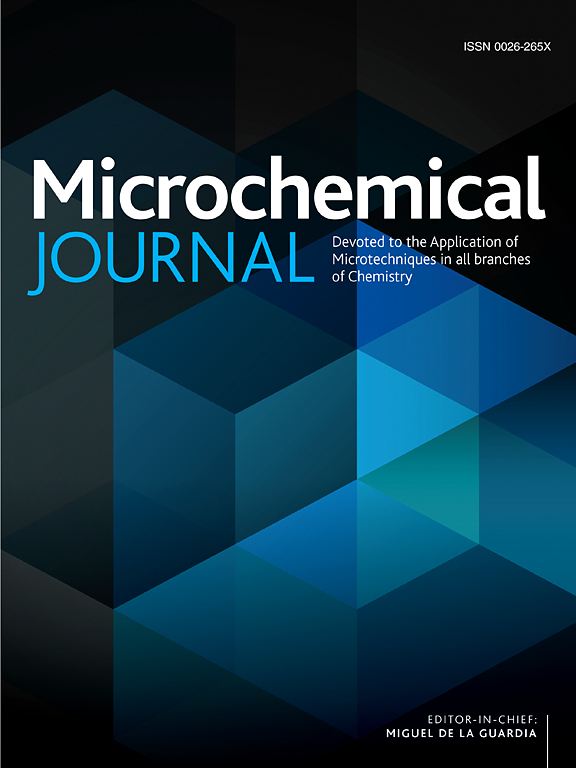基于碳纳米管(CNTs)的电化学生物传感器用于诊断胰腺癌和肝癌
IF 4.9
2区 化学
Q1 CHEMISTRY, ANALYTICAL
引用次数: 0
摘要
本文综述了基于碳纳米管(CNT)的电化学生物传感器诊断胰腺癌和肝癌生物标志物的最新进展。CNTs独特的结构和功能特性,如高表面积、优异的导电性和生物相容性,使其在癌症相关生物标志物的敏感和特异性检测中非常有效。综述总结了证明基于碳纳米管的生物传感器在早期癌症生物标志物鉴定中的潜力的关键研究。讨论了各种传感器的设计、制造技术和检测机制,以突出该领域的进展。此外,分析了基于碳纳米管的生物传感器与传统诊断方法相比的优点和局限性。通过对最新研究的全面概述,本研究强调了碳纳米管在提高癌症生物标志物检测的准确性和效率方面的作用。未来的观点,改进基于碳纳米管的生物传感器技术,包括提高选择性,稳定性和集成点护理诊断系统的策略,也进行了探讨。综述了基于碳纳米管的生物传感器在胰腺癌和肝癌生物标志物识别中的应用,并讨论了目前的研究进展。本文章由计算机程序翻译,如有差异,请以英文原文为准。

Electrochemical biosensors based on carbon nanotubes (CNTs) used to diagnosis pancreatic and liver cancer
This review examines recent advancements in carbon nanotube (CNT)-based electrochemical biosensors for the diagnosis of pancreatic and liver cancer biomarkers. The unique structural and functional properties of CNTs, such as their high surface area, excellent electrical conductivity, and biocompatibility, make them highly effective for sensitive and specific detection of cancer-associated biomarkers. The review summarizes key studies that have demonstrated the potential of CNT-based biosensors in early cancer biomarker identification. Various sensor designs, fabrication techniques, and detection mechanisms are discussed to highlight the progress made in this field. Additionally, the advantages and limitations of CNT-based biosensors compared to conventional diagnostic methods are analyzed. By providing a comprehensive overview of the latest research, this study underscores the role of CNTs in enhancing the accuracy and efficiency of cancer biomarker detection. Future perspectives on improving CNT-based biosensor technology, including strategies for increasing selectivity, stability, and integration with point-of-care diagnostic systems, are also explored. Also, this review focuses on the applications of CNT-based biosensors in the identification of pancreatic and liver cancer biomarkers and discusses current research progress.
求助全文
通过发布文献求助,成功后即可免费获取论文全文。
去求助
来源期刊

Microchemical Journal
化学-分析化学
CiteScore
8.70
自引率
8.30%
发文量
1131
审稿时长
1.9 months
期刊介绍:
The Microchemical Journal is a peer reviewed journal devoted to all aspects and phases of analytical chemistry and chemical analysis. The Microchemical Journal publishes articles which are at the forefront of modern analytical chemistry and cover innovations in the techniques to the finest possible limits. This includes fundamental aspects, instrumentation, new developments, innovative and novel methods and applications including environmental and clinical field.
Traditional classical analytical methods such as spectrophotometry and titrimetry as well as established instrumentation methods such as flame and graphite furnace atomic absorption spectrometry, gas chromatography, and modified glassy or carbon electrode electrochemical methods will be considered, provided they show significant improvements and novelty compared to the established methods.
 求助内容:
求助内容: 应助结果提醒方式:
应助结果提醒方式:


